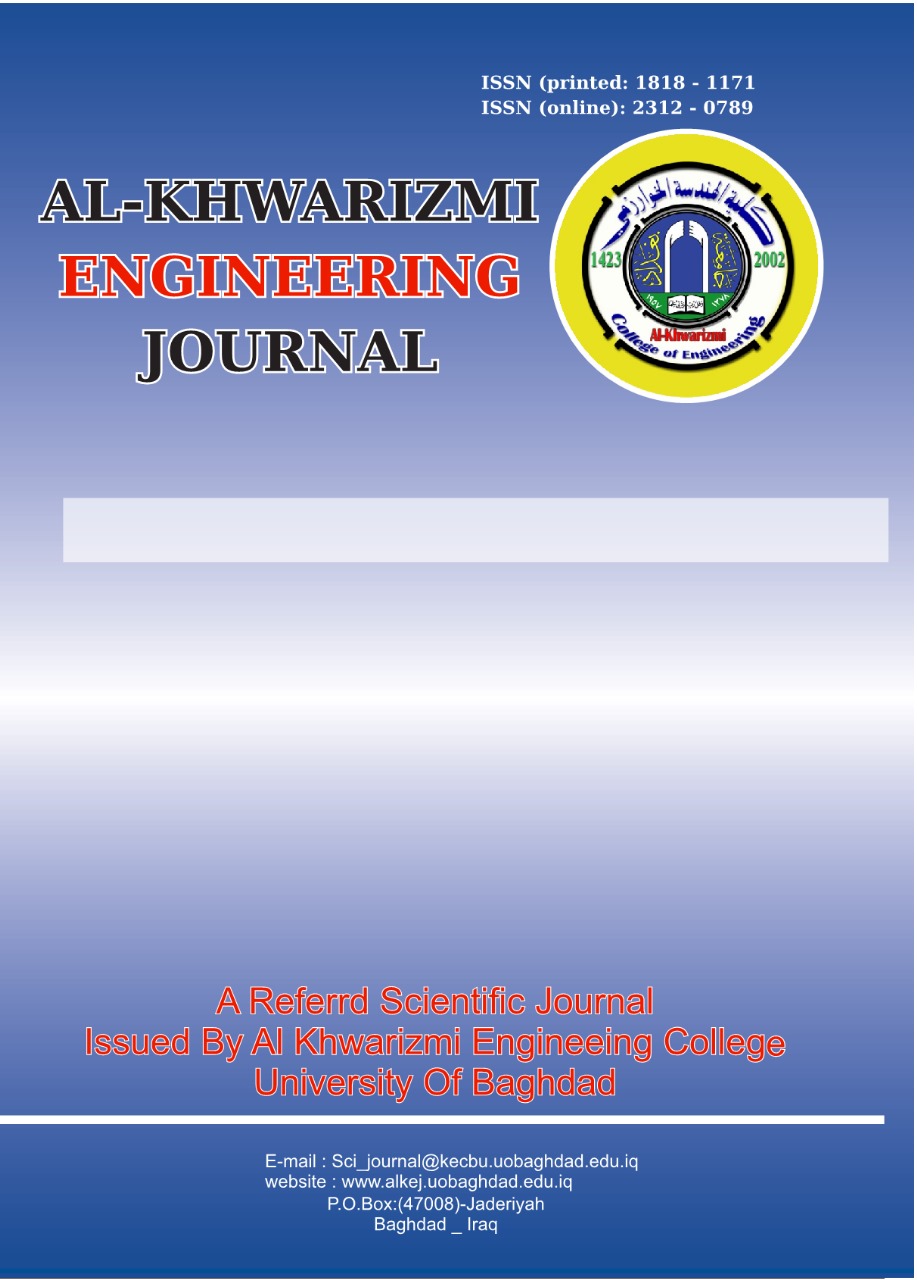Abstract
Flow-production systems whose pieces are connected in a row may not have maintenance scheduling procedures fixed because problems occur at different times (electricity plants, cement plants, water desalination plants). Contemporary software and artificial intelligence (AI) technologies are used to fulfill the research objectives by developing a predictive maintenance program. The data of the fifth thermal unit of the power station for the electricity of Al Dora/Baghdad are used in this study. Three stages of research were conducted. First, missing data without temporal sequences were processed. The data were filled using time series hour after hour and the times were filled as system working hours, making the volume of the data relatively high for 2015-2016-2017. 2018 was utilized as a test year to assess the modeling work and validate the experimental results. In the second step, the artificial neural networks approach employs the python program as an AI, and the affinity ratio of real data using the performance measurement of the mean absolute error (MAE) was 0.005. To improve and reduce the value of absolute error, the genetic algorithm uses the python program and the convergence ratio became 0.001. It inferred that the algorithm is efficient in improving results. Thus, the genetic algorithm provided better results with fewer errors than the neural network alone. This concludes that the shown network has superior performance over others and the possibility of its long-term predictions for 2030. A Sing time series helped detect future cases by reading and inferring system data. The development of appropriate work plans will lower internal and external expenses of the systems and help integrate other capabilities by giving correct data sources of raw materials, costs, etc. To facilitate prediction for maintenance workers, an interface has been created that facilitates users to apply them using the python program represented by entering the times, an hour, a day, a month, a year, to predict the type and place of failure.
Keywords
AI
artificial intelligence
maintenance
python language.
Abstract
قد لا يتم إجراء جدولة الصيانة لأنظمة التدفق والإنتاج التي يتم توصيل قطعها على التوالي لأن المشاكل تحدث في أوقات مختلفة (محطات الكهرباء، مصانع الأسمنت، محطات تحلية المياه). لتحقيق أهداف البحث من خلال تطوير برنامج الصيانة التنبؤية والبرمجيات المعاصرة والذكاء الاصطناعي وتم العمل ع بيانات الوحدة الخامسة لمحطة الدورة الحرارية، أجريت ثلاث مراحل في البحث. أولاً، تمت معالجة البيانات المفقودة التي كانت بدون تسلسل زمني. تم ملء البيانات باستخدام السلاسل الزمنية ساعة بعد ساعة وأوقات الملء كساعات عمل النظام، مما يجعل حجم البيانات مرتفعًا نسبيًا للفترة 2015-2016-2017، وتم استخدام 2018 كسنة اختبار لتقييم عمل النمذجة والتحقق من صحة النتائج التجريبية. في الخطوة الثانية، استخدم نهج الشبكات العصبية الاصطناعية برنامج بيثون كذكاء اصطناعي، ونسبة التقارب إلى البيانات الحقيقية باستخدام قياس الأداء (متوسط الخطأ المطلق) MAE (0.005). ولتحسين وتقليل نسبة الخطأ المطلق، تم استخدام الخوارزمية التطورية لتحسين أوزان الشبكة العصبية، وأصبحت نسبة التقارب MAE (0.001). يستدل من ذلك كفاءة الخوارزمية في تحسين النتائج وبذلك تقدم الخوارزميات الجينية نتائج أفضل مع أخطاء أقل من الشبكات العصبية وحدها. يخلص هذا إلى أن الشبكة المبنية تتمتع بأداء متفوق عن الآخرين وإمكانيتها ع التنبؤ طويل الأمد لسنة 2030، وأن استخدام السلاسل الزمنية ساعد في اكتشاف الحالات المستقبلية من خلال قراءة بيانات النظام واستنتاجها. وسيؤدي وضع خطط عمل مناسبة إلى خفض النفقات الداخلية والخارجية للأنظمة والمساعدة في تكامل القدرات الأخرى من خلال إعطاء البيانات الصحيحة كمصادر للمواد الخام والتكاليف وغيرها. ولتسهيل التنبؤ للعاملين ع الصيانة تم انشاء واجهات تسهل ع المستخدمين تطبيقها باستخدام برنامج بايثون ممثلة بإدخال الازمان ساعة-يوم –شهر –سنة للتنبؤ بنوع ومكان الفشل.
